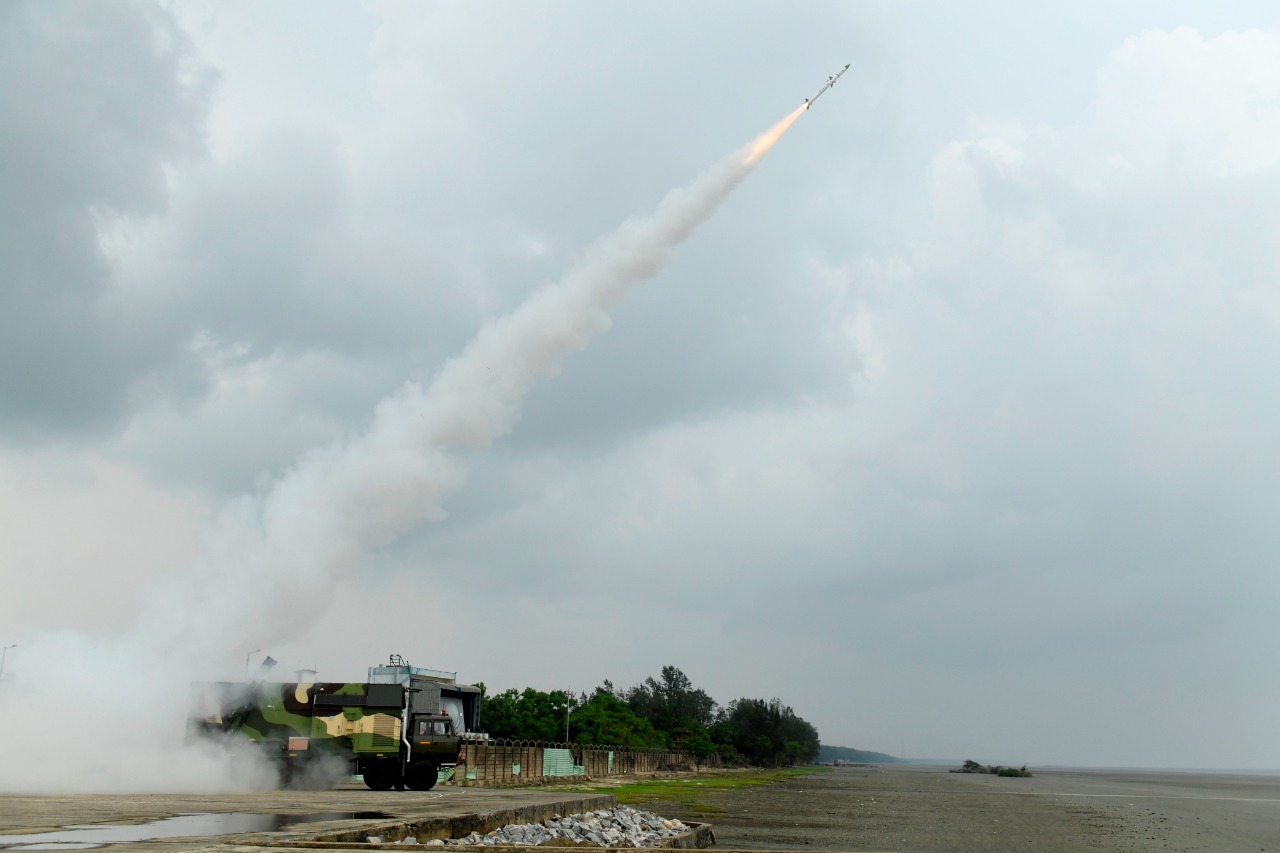Amid border standoff with China, India’s DRDO successfully flight-tested the New Generation Akash (Akash-NG) air defense missile and an indigenously developed low weight, fire and forget, man-portable anti-tank guided missile (MPATGM).
The Defence Research & Development Organisation (DRDO) conducted the test of Akash-NG, a surface-to-air missile, from the Integrated Test Range (ITR) off the coast of Odisha on July 21, according to a government press release.

The flight trial was conducted at around 12.45 pm from a land-based platform with all weapon system elements such as Multifunction Radar, Command, Control & Communication System and launcher participating in the deployment configuration.
The missile system has been developed by Defence Research & Development Laboratory (DRDL), Hyderabad in collaboration with other DRDO laboratories. The launch was witnessed by the representatives of the Indian Air Force.
In order to capture flight data, ITR deployed a number of range stations such as Electro-Optical Tracking System, Radar and Telemetry. The flawless performance of the entire weapon system has been confirmed by complete flight data captured by these systems. During the test, the missile demonstrated the high manoeuvrability required for neutralising fast and agile aerial threats.
In a major boost to #AtmaNirbharBharat and strengthening Indian Army, Defence Research and Development Organisation (DRDO) successfully flight tested indigenously developed low weight, fire and forget Man Portable Antitank Guided Missile (MPATGM) today 21st July 2021. pic.twitter.com/kLEqrsgoOR
— DRDO (@DRDO_India) July 21, 2021
Once deployed, the Akash-NG weapon system will prove to be a force multiplier for the air defense capability of the Indian Air Force. Production agencies Bharat Electronics Limited (BEL) and Bharat Dynamics Limited (BDL) also participated in the trials.
Indian Defense Minister Rajnath Singh has congratulated DRDO, BDL, BEL, Indian Air Force and the industry for the successful test.
In another development, DRDO successfully flight-tested an indigenously developed low weight, fire and forget man-portable anti-tank guided missile (MPATGM) on July 21.
Earlier in the month amid continued India-China tensions, Indian Minister of External Affairs Subrahmanyam Jaishankar and his Chinese counterpart, Wang Yi, discussed on Wednesday the situation on the Line of Actual Control (LAC) in the wake of last year’s border crisis.
The meeting took place in Dushanbe on the sidelines of the Shanghai Cooperation Organization foreign ministers’ session.
“The two Ministers had a detailed exchange of views on the current situation along the Line of Actual Control (LAC) in Eastern Ladakh and also on other issues related to the overall India-China relations,” the statement said.
The Indian minister highlighted the importance to complete the disengagement process and resolve the remaining issues concerning the LAC as soon as possible, recalling that neither India nor China is interested in the prolongation of the existing situation.
The sides said that they will continue to ensure stability, promising that no one will take any unilateral actions that could raise tensions between the countries, the ministry added.
The new wave of tensions between China and India over lack of a duly demarcated borderline in the Himalayas began in May 2020. Following several skirmishes, the sides ramped up their military presence in the border area.